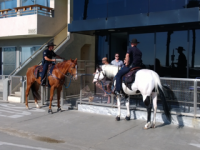Kowa's Genesis 8x33 can resolve 3 Starling-pairs per foot. I know because during field work for my review, the Starlings lined up on a local roof ridge.
I am sure that they can do much better than this but getting smaller species to line up on roof ridges isn't easy.
In a similar vein, Zeiss SF 8x42s can resolve 3 European Otters (side by side) per yard, on the rare occasions they stop moving, and HT 8x42s can do 3 Red Squirrels per foot, subject to what they are doing with their tails.
Come on pals, someone out there can do better than that. Swallows on a wire? Red-footed Falcons over a termite hill, Prairie Dogs on, well, a prairie?
Lee
I am sure that they can do much better than this but getting smaller species to line up on roof ridges isn't easy.
In a similar vein, Zeiss SF 8x42s can resolve 3 European Otters (side by side) per yard, on the rare occasions they stop moving, and HT 8x42s can do 3 Red Squirrels per foot, subject to what they are doing with their tails.
Come on pals, someone out there can do better than that. Swallows on a wire? Red-footed Falcons over a termite hill, Prairie Dogs on, well, a prairie?
Lee
Last edited:





